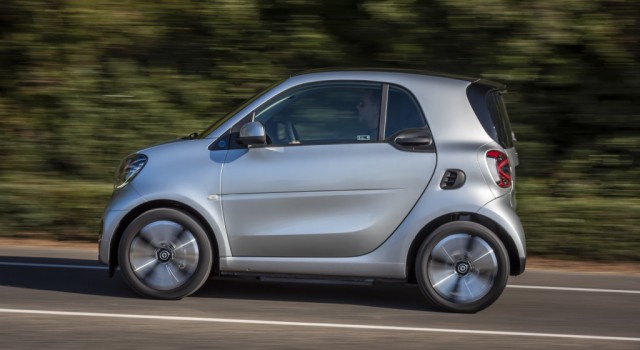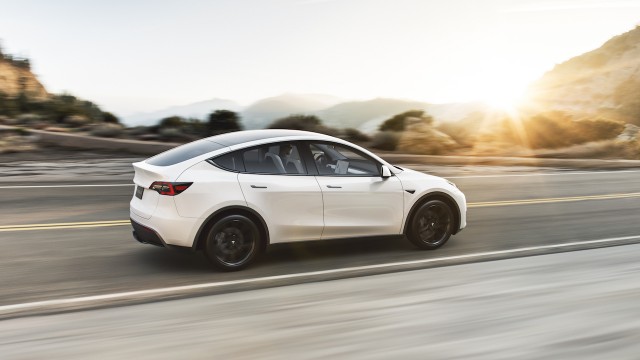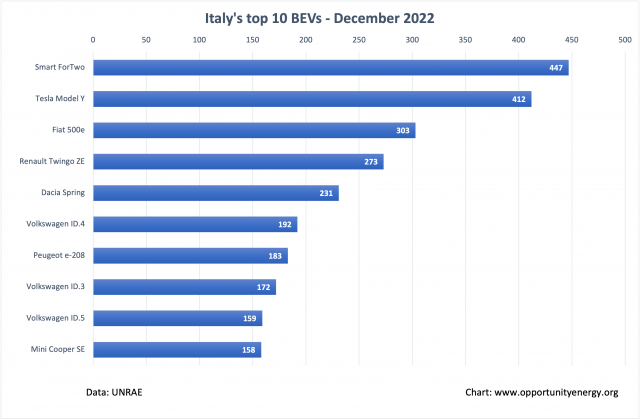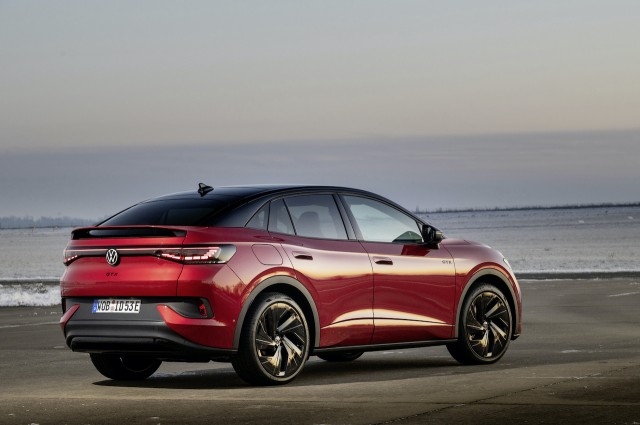Italy’s EV market ended a weak 2022 with a December in line with the unimpressive figures posted in previous months. While the overall car market showed good signs of recovery, plug-ins yet again stalled in what is a reverse trend not followed by any other major European nation.
Official statistics from Unrae complete the picture of a difficult year for Italy’s shift to electric mobility with remarkably unflattering figures. Overall car sales saw very healthy levels, with almost 107,000 units for the month of December. This meant a 20% increase Year-On-Year (YoY) from less than 89,000 units recorded a year prior. But contrary to what many would consider common sense, such a boost was not in the direction the rest of Europe is taking. Pure ICE vehicles maintained their relative market share levels unscathed, with petrol and diesel powertrains at 25.5% and 20.5% respectively (they were at 26.1% and 20.5% twelve months before). The overall market volume increase however means absolute registrations for ICEs also rose in tune with it by similar margins, a move that contradicts broader trends in the automotive market. The big winners of the month were actually traditional, plugless hybrids, which were the main reason for this market rebound. Hybrids themselves rose by over 10,000 units YoY to over 37,000 registrations, equal to 34.6% market share (30.1% a year before).
Full electric cars did not go beyond 4,598 units for the month, at 4.3% market share. A far cry from the figures of December 2021, when BEVs had scored over 6,200 registrations for a 7% share, crowning a big year for electric mobility in the country. This underwhelming result, again an almost 26% decrease YoY as it had happened in November, is all the more puzzling given that end of year EV sales tend to come with a big push by at least some car makers (most notably Tesla). But none of that happened this time around, leaving pure electrics to trail most other powertrains.
Plug-in hybrids yet again showed better results than BEVs, scoring 5,473 units, or 5.1% market share. This was also a decline YoY, from the over 5,700 registrations PHEVs boasted twelve months before, but not nearly as bad as the result of BEVs. The surprising decline of plug-ins in an otherwise rebounding car market caused their combined market share to decline more substantially YoY to 9.4%, when just a year before it had reached 13.4%.
This month’s Top 10 BEV chart shows inevitably underwhelming numbers, with some unusual entries.
Smart ForTwo claimed the last top spot of the year, albeit with a not so impressive 447 registrations. Tesla Model Y followed closely in second position with 412 units, a rather weak result in what would normally be one of the four delivery peaks of the year, if not the highest overall. The typical Tesla end-of-year delivery push could have easily resulted in 1,000+ units (which Model Y reached in September, the only BEV to do so in 2022) however it did not materialise for the Italian market this time around, thus accentuating the overall BEV market decline. Fiat 500e, queen of Italy’s full electrics, completed the deflated podium with 303 units, far from its past highs and from a top spot since August.
Out of the top three, Renault Twingo ZE and Dacia Spring retained their ranks in fourth and fifth place, although still far from their broadly untapped potential. Time for an aggressive move and review pricing, or simply to finally match unmet demand with deliveries? Further down, unusual Volkswagen trio ID.3, ID.4 and ID.5 filled the lower ranks of the chart, possibly their own little quarter-end push, with the ID.5 making its first appearance with 159 units, in ninth place. Hard to tell whether the MEB platform models’ appearance could mark the start of a new phase for the German brand, but given the lukewarm reception of the IDs so far, this seems unlikely.
In another subdued month for electric mobility, it is not just the low sales’ numbers of A-segment popular minis that raises alarm, but also the absence of an otherwise ever present end-of-year push by Tesla, which was regularly in action elsewhere in the Continent. It’s probably not just a reduced appetite at play in Italy’s current EV market, but also a deprioritisation by all car makers, which in an uncertain year – across some European countries and Italy in particular – may have decided to focus their sales efforts where they would better pay off. With the rest of Europe pushing electric mobility to new highs, Italy’s hope for a spark of new life in its EV market may ultimately come from a rebalanced global supply, whatever the horizon for that may be.










